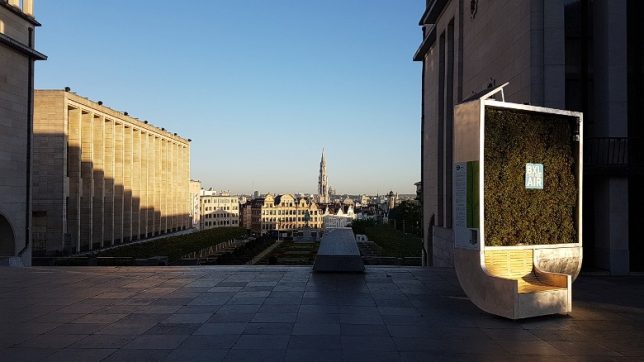Analog gems part 2
 |
Back in 2017 we shared our list of 10 excellent, affordable film cameras worth considering. Jump to today, in 2019, and public interest in analog photography has only continued to grow. So much so that we thought it was high time to revisit our original list and call out ten more film cameras worthy of your time and money.
These cameras were selected based on reader feedback, research and the staff’s collective analog lust. All of them can be found pretty easily on the second-hand market in good working order, most for a relative bargain. So get ready to hunt through your freezer for a long-expired roll of film, it’s time for Analog Gems Part 2.
Read Analog Gems part 1Note: cameras are arranged from least to most expensive.
Nikon EM
 |
History: The Nikon EM was by all measures, a commercial flop for the brand. Yet decades later it has endured as Nikon’s smallest, lightest and best-looking (opinion) film SLR. Launched in 1979, this Aperture Priority-only camera was reportedly built with female shooters in mind – the stylish good looks are courtesy of famed auto designer Giorgetto Giugiaro. It’s anyone’s guess why the camera sold poorly; manufacturing stopped by 1982, but the theory is most women at the time preferred the EM’s fully-manual siblings to what is essentially a simplified, fashion-forward, budget model. Still, despite its entry-level status, the EM is as reliable as its pricier siblings from the same era.
If you’re after a small, handsome little camera that’s super simple to use, look no further
Why we like it: If you’re after a small, handsome little camera that’s super simple to use, look no further. The EM features a very accurate center-weighted meter that’s powered by two S76 or A76 batteries. A small button below the film rewind acts as a negative two stop exposure compensation when pressed. The camera is fully electronic in operation but can function on no juice with limited shutter speeds – an ‘M90’ mode locks the shutter speed at 1/90 sec, the camera’s standard ‘Auto’ mode sets the shutter speed to 1/1000 sec. The body is mostly built of a copper and aluminum alloy, though the top and bottom covers are polycarbonate.
Find one: These cameras are incredibly easy to come across in new, or like-new condition for between $ 20 and $ 75. They only come in black. The EM’s arrival on the scene also brought with it the introduction of Nikon’s budget E line of glass. Of this line, the 50mm F1.8 E and the 100mm F2.8 E are both impressive performers and quite compact in size. It’s very easy to find the former kitted with the EM on places like Ebay.
Also consider: The Nikon FM was a step up from the EM – they’re a little pricier and chunkier but come with full manual controls.
Konica C35 EF
 |
History: The C35 EF is a compact rangefinder camera that debuted in 1975. It sports a very sharp 38mm F2.8 lens and the World’s first pop-up flash. Other than choosing to activate the flash or not, the camera is fully automatic in nature. A small red light on the back illuminates if the exposure is too dark and the flash is needed. Focus is set by choosing one of four zones.
Why we like it: A personal favorite of Andy Warhol, there’s something oh-so-appealing about these boxy little cameras. They’re fairly well-built, easy to use and an eye-catcher for sure. Perhaps most importantly, the lens is very sharp and metering/flash output tends to be accurate. The flash is powered by standard AA batteries. The meter uses a discontinued 1.35v mercury cell battery, however the MR-44 battery adapter will allow you to use a common silver oxide battery (392 or SR41) instead without any issues.
A personal favorite of Andy Warhol, there’s something oh so appealing about these boxy little cameras
Find one: You can find a C35 EF used, in good condition for between $ 20 and $ 75. They come in two varieties, the later version has a self timer (and a greater range of shutter speeds for the camera to choose from).
Also consider: The C35 EF3 debuted several years after the original C35 and sports a redesigned 35mm F2.8 lens. It’s also got a lighter body and has an even greater range of shutter speeds for the camera to select from. Available in 7 colors, including a cherry red variety, these can be a little trickier and pricier to track down than the original C35 EF.
Note: The C35 EF3 is shown above
Fujifilm Instant Mini 70
 |
History: Launched in 2011, the Fujifilm Instax Mini 70 is one of the brand’s most-stylish and affordable instant cameras. As its name suggests, it uses the Fujifilm’s Instax Mini format, which comes in packs of 10. The Instax brand itself was actually first introduced back in 1998 and has grown extremely popular, especially in recent years.
Why we like it: Of all the instant cameras currently on the market, we picked the Mini 70 as our favorite thanks to its balance of price to features. It’s lightweight, looks cool and is very easy to operate. The camera’s powered by two lithium CR2 batteries which provide ample power for many packs of film. It’s also fairly well-built and offers some very basic manual controls (+2/3rd EV and flash on/off).
It’s light-weight, looks cool and is easy to operate
Find one: These cameras are still being made and can be purchased new in a wide variety of fun colors for around $ 50-75. We like Island Blue.
Also consider: The Fujifilm Instax Wide 300 uses the brand’s largest format instant film and is both easy to operate and well-built. It’s certainly a chunky beast of a camera, but that’s par for the course in this format.
Olympus OM-1/N
 |
History: The Olympus OM-1 is a small, lightweight SLR that debuted in the early 1970’s at Photokina. It was originally called the M-1, which didn’t make Leica too happy (given their existing M-series rangefinder line), so the name was later changed to OM-1. Purely mechanical in nature, the OM-1 offers only manual controls. The OM-1N was a slightly updated model offering a redesigned wind lever, and some improvements designed to make it easier to work with a flash.
Why we like it: The OM-1 features a large viewfinder packed into a small, light SLR. It’s an attractive little camera that has some unusual design elements, like its shutter speed dial around the lens barrel. These cameras are very well-built and only need batteries to operate the meter, which takes a now-discontinued 1.35v mercury cell battery. But not to worry, there’s an adapter for that too – the MR-9 battery adapter will allow you to use a common silver oxide battery (386).
It’s an attractive little camera that has some unique design elements
Find one: These cameras can easily be found in good condition for between $ 50 and $ 150 in the two-tone silver-and-black variety. An all-black version is also available but for a good bit more cash. The OM-1 often sells with the original kitted 50mm F1.8 lens.
Also consider: The Olympus OM-2 can be purchased for just a little more than the original OM-1 and gives you automatic exposure controls as well as manual controls. There’s also no mercury battery to worry about . However the camera is fully electronically controlled, so power is needed to use most shutter speeds.
Photo by Alan Drummond
Pentax MX
 |
History: The Pentax MX was released as a professional-level camera in 1976 during a time when competition in the SLR market was stiff and SLRs were getting ever smaller. The MX remained Pentax’s flagship until the 1980s. Externally similar to the Pentax ME, the MX is purely mechanical and offers only manual controls. The ME on the other hand is electronically-controlled with both manual and auto functions. The former was geared toward professionals, the latter toward enthusiasts.
Why we like it: The Pentax MX is a handsome camera – it’s among the smallest and lightest SLRs on our list (second to the Nikon EM) and very well constructed. Operation is fully-mechanical, so if the battery dies (two LR44 batteries) you only lose the lightmeter. Controls are simple and direct – the viewfinder is impressively large.
The Pentax MX is among the smallest and lightest SLRs in our list
Find one: The Pentax MX can be found in good condition for between $ 75 and $ 200, often with the original kitted Pentax 50mm F2 included (splurge on the much nicer 50mm F1.7 if you can find it). The two-tone silver-and-black models are far easier to find than the all-black finish.
Also consider: The Pentax ME is similar in size and weight to the MX and can be found for considerably less cash. It doesn’t have the same reputation for reliability as the MX and requires batteries to operate (except at 1/100 sec), but it is still a very good bang for your buck.
Photo by Pierre-Jean Parra
Canon T90
 |
History: Introduced as Canon’s flagship camera in 1986, the T90 is also arguably the most advanced FD-mount camera ever made. The year after its debut Canon unveiled the all-electronic EF-mount on EOS cameras with support for autofocusing lenses, effectively nailing the coffin shut on future FD development. Still, the T90 offers a ton of modern features – like a top plate display, multi-function control dial and incredibly sophisticated ambient and flash metering modes, plus 4.5 fps burst shooting – in a tough, beautiful body. Its release also ushered in a more curvaceous era of Canon SLR design, one we’re still very much in. The Current EOS-1D X Mark II owes a lot to the T90, after more than 30 years.
Why we like it: It’s almost impossible to hold the T90 and not think about modern Canon DSLRs – so much of their ergonomic excellence is rooted in this camera. From a usability standpoint, the T90 is a pleasure to shoot with – it’s powered by 4 AA batteries. Nicknamed ‘The Tank,’ these cameras can take a lot of abuse. Did we mention 4.5 fps continuous shooting?
The T90 offers a ton of modern features like 4.5 fps burst shooting
Find one: There are some common T90 problems to keep an eye out for, like sticky shutters and faded top plate LCDs, but it’s not hard to find one in great working order. Good condition models can be had for between $ 150 and $ 250, body-only. And because the FD mount was discontinued, lenses for the T90 are often a bargain. Just be aware, almost every second-hand T90 will be missing its original eyecup.
Also consider: The Canon T70 is the boxy, more 80s-looking predecessor to the T90. It offers a top plate LCD, continuous shooting (a lackluster 0.7 fps) and multiple metering modes. Unlike the T90 it is a fully-automatic camera. You can find them for around $ 50.
Nikon FE2
 |
History: We wavered back and forth between recommending the FE2 and the FM2 and ultimately chose the former as they’re easier to find in good condition, for a decent price. These two mid-range cameras are very similar both in design and in terms of their reliability – both are also relatively light and compact for an SLR. The FM2 was released in 1982 and only has manual controls, while the FE2 was released in 1983 and has both manual and automatic controls. The ‘M’ in FM2 refers to it’s purely mechanical design, the ‘E’ in FE2 refers to its electronically-controlled design.
Why we like it: The FE2 can be operated in a fully manual capacity or in an aperture priority mode. Conveniently, you can adjust exposure compensation by + / – 2 stops (available in third stop increments) when shooting in aperture priority. Metering is center-weighted and accurate. The camera is powered by two S76 or A76 batteries and will still work with no batteries, albeit in a limited capability (only 1/250 sec and bulb). These cameras are very well built and easy to come across in good working order.
These cameras are very well-built and easy to come across in good working order
Find one: You can expect to pay between $ 150 and $ 250 for an FE2 in nice condition, though that price seems to slowly be creeping upwards. They come in both all-black as well as two-tone black and silver. If you score a particularly minty one you can likely expect it to serve you for many years to come.
Also consider: The original Nikon FE can be had for a bit less money than the FE2, and you don’t sacrifice much (slower top shutter speed, flash sync speed, no TTL flash). On the other hand, for more cash you can get yourself the purists’ camera in a Nikon FM2.
Photo by Paul Chin
Konica Big Mini BM-200 or 300-series
 |
History: There are a few different varieties of the Konica Big Mini that came out in the early 90’s – including several with zoom lenses. For simplicity’s sake we will focus on the non-zooming BM-200 and 300-series (which are quite similar). These lightweight point-and-shoots sport the same sharp 35mm F3.5 lens and are fully-automatic in nature. Two LEDs in the viewfinder let users know whether autofocus can be achieved and whether the flash will fire.
The flash output is well-balanced and the lens is impressively sharp
Why we like it: Big Minis are simple to use and provide excellent results – the flash output is well-balanced and the lens is impressively sharp. There’s also something to be said for their understated rectangular design. They can, however, be a tad fragile due to their mostly plastic construction. But treat a Big Mini with a little TLC and it’ll likely keep on snapping for years. One more note of caution: Be careful not to open the rear door too far when loading/unloading a roll as doing so can tear a crucial bit of electric ribbon. This is the primary failure point on these cameras. The Big Mini is powered by a CR123 battery.
Find one: These cameras can be found in good condition for between $ 150 and $ 250. They come in both silver and dark grey.
Also consider: The Big Mini F sports an even faster 35mm F2.8 lens and same boxy form-factor but tends to cost a fair bit more than its slower siblings.
Nikon F100
 |
History: The Nikon F100 is a modern film SLR released in 1999, the same year as the Nikon D1. Slated right below the flagship Nikon F5 (and later F6) in the company’s film SLR lineup, it sports many pro-level features like Nikon’s excellent Matrix metering (as well as spot and center-weighted), 4.5 fps shooting, automatic bracketing and a variety of autofocus modes.
The F100 operates and handles a lot like a modern Nikon DSLR
Why we like it: The F100 operates and handles a lot like a modern Nikon DSLR – it looks like one too. It’s these familiar controls and use of the F-mount make it the perfect camera if you’ve got Nikon glass and are curious about trying your hands at film shooting. The F100 is also well-constructed, though a tad hefty for a film SLR – power comes from 4 AA batteries or an optional MB-15 battery pack. One word of caution: The rubber covering on the back of these cameras has a tendency to get sticky with age – this can be rectified with some careful (and time-consuming) scraping.
Find one: Because the F100 came out toward the end of the film era, these feature-packed cameras can be found for relatively little cash. Pick one up in good condition for $ 150-250. They only come in black.
Also consider: The Nikon F90 series debuted a few years prior to the F100 and offers many of the same features, but with only a single autofocus point. They can be found pretty easily for less than $ 50.
Photo by Ángeles Andrade
Fujifilm GS645S
 |
History: Fujifilm made some wacky-looking medium format cameras in the 80’s and this one is no exception – just look at that bumper. The GS645S belongs to the greater GS645 family of compact, fixed lens medium format cameras, all of which shoot a 4.5 x 6 image. The ’S’ model offers a 60mm F4 lens that produces a 35mm (35mm-equiv.) field of view. Focusing and exposure controls are all located around the lens. There are no auto settings.
Because it shoots 4.5 x 6, you get 15 shots per roll
Why we like it: The GS645S is an excellent small and lightweight medium format option for street or travel photography. The lens is sharp and the camera is well-built. Power comes from two LR44 batteries. Because it shoots 4.5 x 6, users get 15 shots per roll. And though the default vertical orientation takes some getting use to, the camera can easily be operated vertically (for a horizontal field of view).
Find one: These cameras are slowly creeping up in price but can usually be found in good condition for between $ 300 and $ 450.
Also consider: The GS645S’ siblings are also worth your consideration. The original GS645 features a collapsible 75mm F3.4 lens and the GS645W features a 45mm F5.6 lens. You’ll pay around the same price for these models.
The wrap
 |
There you have it, 10 cameras ranging from 70’s SLR classics to odd-ball 80’s compacts. As always, feel free to suggest other great analog camera buys in our comment section below. And for more analog fun, jump back to our original list: Analog gems: 10 excellent, affordable film cameras. Feel free to leave suggestions for Part 3 in the comments.
Articles: Digital Photography Review (dpreview.com)











































You must be logged in to post a comment.